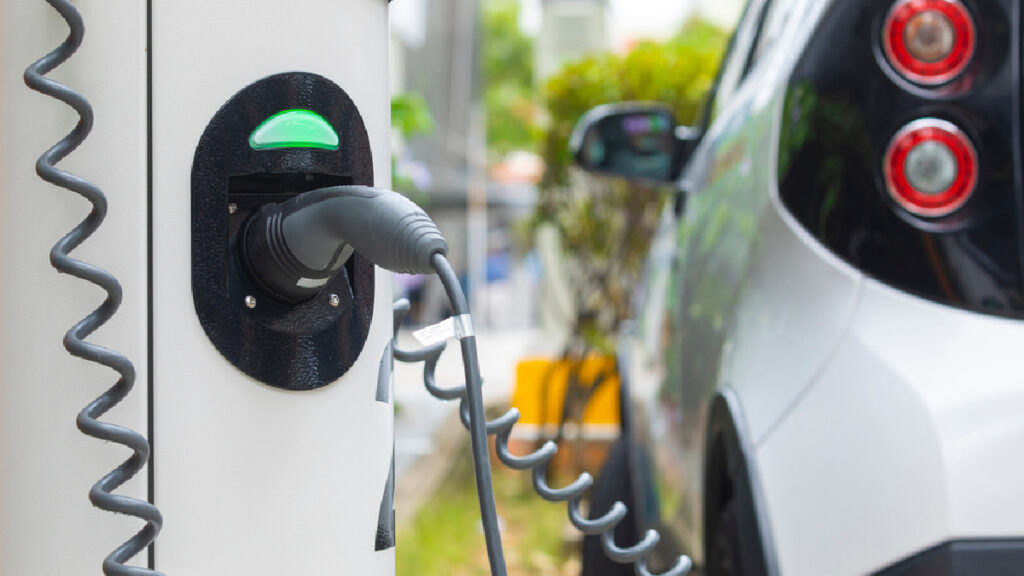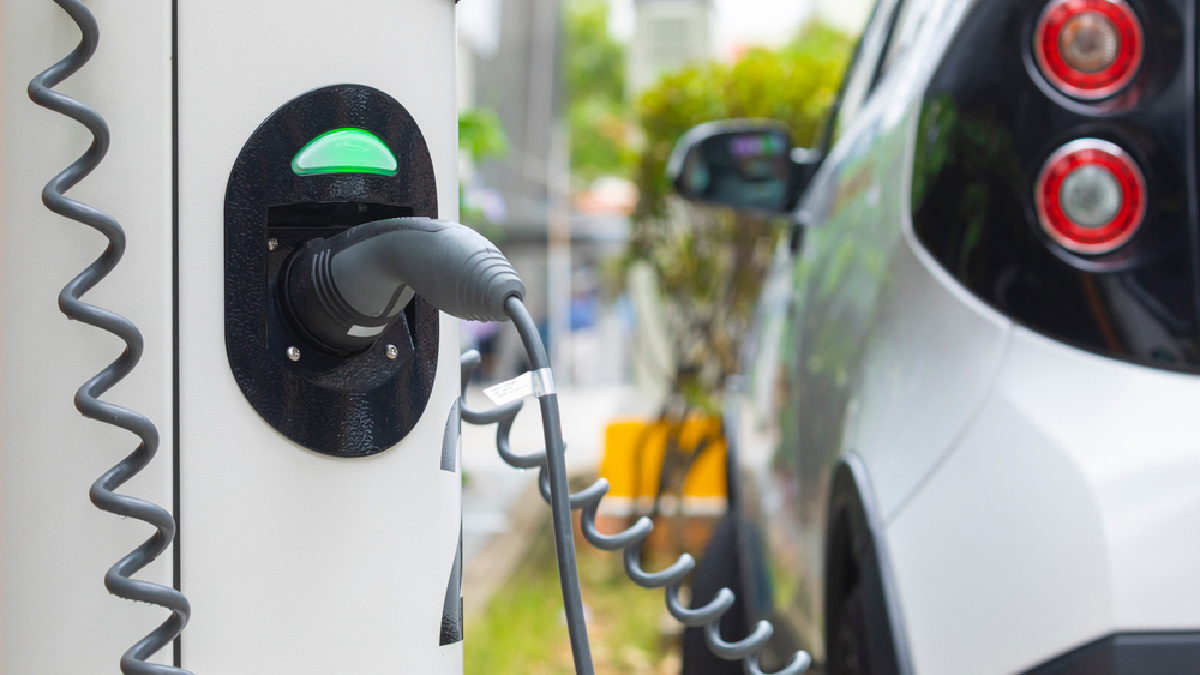Last Updated on February 9, 2025 by Chris

Thinking about renting an electric car on for your next trip? You may have questions about how to charge your rental car during your travels. When it comes to keeping an EV powered up, not all electric car chargers are created equal. Here’s a quick guide:
EV Charging Minimum Standards Rule
The current charging scene is a bit convoluted. To help solve that, in March 2023, the Federal Highway Administration introduced new national standards for federally funded EV chargers to ensure that charging is a predictable and reliable experience for EV drivers. The goals are:
- drivers can easily find a charger
- drivers do not need multiple apps and/or accounts to charge
- chargers work when drivers need them to
- chargers are designed to be universally compatible with all electric vehicles
The rule establishes minimum technical standards for charging stations, including required number of charging ports, connector types, power level, availability, payment methods, uptime/reliability, EV charger infrastructure network connectivity, and interoperability, among other standards and requirements.
Ask AutoSlash for a Quote on a Cheap Car Rental
Work to achieve these goals is slowly getting off the ground. Recently, there have been some significant shake-ups in the charging landscape with news that some major EV manufacturers — including Ford, GM, Rivian, Polestar, and Volvo — are switching to Tesla’s connector starting in 2025. In the meantime, here’s the scoop on how charging a car works in 2023.
Connectors
EV charging connectors can differ significantly by geography and car model, making it crucial for renters to understand the distinctions between various connector types.
J1772: The 5-pin SAE J1772 connector is the most common EV plug in North America for Level 1 and Level 2 charging. All electric vehicles sold in the US and Canada use this connector, except for Tesla.
CCS: For fast DC charging, the CCS Combo 1 is the standard in North America. Most EV models entering the market today can charge using this connector, which combines the J1772 5-pin format plus two DC fast-charging pins. Essentially, this integrates features from both AC (Level 1 and 2) and DC fast charging, making it feasible to efficiently and quickly charge an EV with a single connector.
CHAdeMO: This is a fast-charging system for BEVs developed in 2010 by the Tokyo Electric Power Company and five major Japanese automakers. As of now, CHAdeMO remains popular in Japan, but is being equipped on very few new cars sold in North America or Europe.
Tesla: Tesla vehicles can only use a proprietary plug that caters to all charging levels: Level 1, Level 2, and DC rapid charging. Unlike other standards, Tesla’s connector is capable of accepting a wide range of voltages. There are J1772 to Tesla adapters that allow a Tesla vehicle access to J1772 charging stations.
Chargers
Level 1
Level 1 equipment provides charging through a common residential 120-volt (120V) AC outlet. Your rental car may or may not have a Level 1 charging adapter cable in it. It’s best to assume it won’t, but that’s not a big deal, since Level 1 charging is so slow it’s not even worth bothering with.
Connector: J1772
Charging time: 40-50 hours to charge a Battery EV (BEV) to 80% from empty; 5-6 hours to charge a Plug-in Hybrid Electric Vehicle (PHEV).
Estimated range per hour of charging: 2-5 miles
Typical Locations: Residential
Level 2
Level 2 equipment offers higher-rate AC charging through 208-240V electrical service. These are the standard public chargers you will generally see outside coffeeshops or grocery stores. Some EVs come with a 240V adapter cable that you can plug into any standard 240V NEMA 14-50 plug used by an electric clothes dryer or offered in an RV slot at a campground. Level 2 chargers are especially great to find at hotels, because you can plug in all night and come out in the morning to a full battery.
Public Level 2 chargers are frequently free, but in my experience the free chargers can be unreliable. Having said that, I was able to pay precisely zero in charging costs for a 600-mile trip through California wine country because I was very aggressive about charging at free Level 2 chargers wherever possible.
When there is a fee to use a Level 2 charger, it’s usually less than the cost of a Level 3 fast charge. Level 2 chargers are fitted with either a Tesla-style plug or the more common J1772 plug.
Connector: J1772
Charging time: 4-10 hours to charge a BEV to 80% from empty; 1-2 hours to charge a PHEV.
Estimated range per hour of charging: 10-20 miles
Typical Locations: Residential, Workplace, Public
Level 3 (DC Fast Charging)
Direct current fast charging (DCFC) equipment offers rapid charging along heavy-traffic corridors at installed stations. These chargers can dump DC electricity straight into the car’s battery at insane speeds ranging anywhere from 15kW all the way up to 350kW, though not all EVs support such crazy fast charging speeds.
Let AutoSlash Track Your Car Rental for Price Drops
In general, Tesla’s own fast-chargers (called Superchargers) are only compatible with Tesla vehicles. Tesla installs and maintains these stations, and has started opening some Supercharger stations to other brands to take advantage of government subsidies.
While sometimes the DCFCs on the slower end are provided for free by businesses like casinos, the more bog-standard 150(ish)-kW chargers tend to come at a cost. Tesla’s Superchargers fall into this category, as do CCS chargers operated by the major charging networks. Level 3 chargers are frequently found in the parking lots of power centers or other large shopping developments, meaning you can duck into a store while your car charges. Tesla Superchargers are frequently found at Target locations, and Electrify America CCS chargers are often found in Walmart parking lots.
Connector: CCS, CHAdeMO, Tesla
Charging time: 20-60 minutes to charge a BEV to 80% from empty; most PHEVs do not work with fast chargers.
Estimated range per hour of charging: 180-240 miles
Typical Locations: Public
Related:




